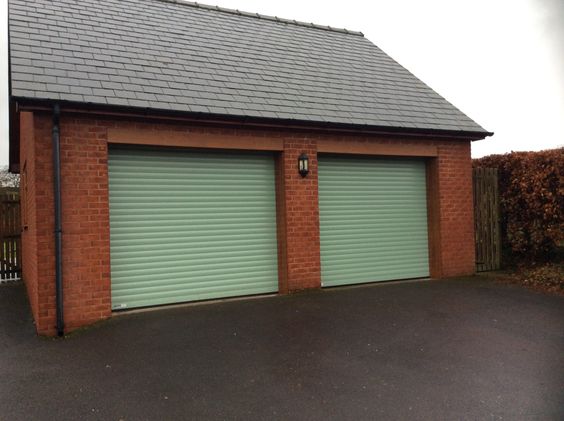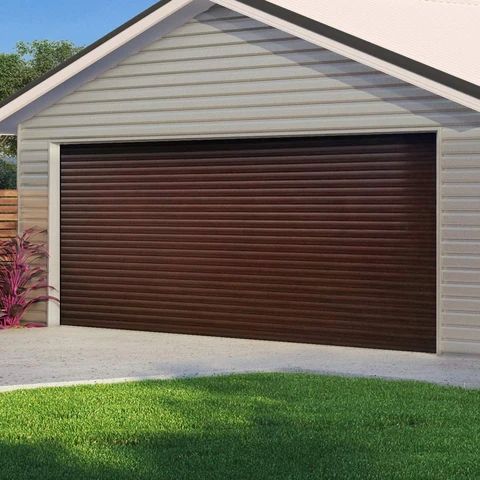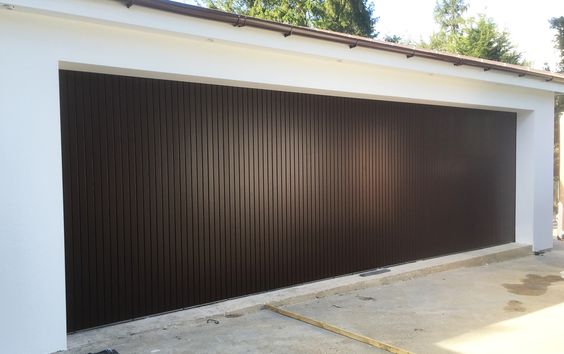As a homeowner who takes pride in the seamless functionality of my living space, the garage door stands as a gateway to convenience and security. However, in the midst of its rhythmic ascent and descent, I found myself facing a common challenge—misaligned tracks. The unsettling noises and jerky movements were not only a source of frustration but also a potential harbinger of more significant issues.

In this journey of home maintenance, I delved into the art of fixing misaligned tracks, unraveling the intricacies of this common problem to ensure the continuous smooth operation of my garage door based from Garage Door Repair.
The Symphony of Movement: Understanding the Role of Garage Door Tracks
Before embarking on the mission to fix misaligned tracks, it’s essential to grasp the fundamental role these unassuming components play in the operation of a garage door. The tracks serve as guides, facilitating the smooth movement of the door as it travels along its designated path. Comprising vertical and horizontal sections, the tracks provide stability and precision to ensure the door’s proper alignment during every open and close cycle.
Detecting the Signs: Indicators of Misaligned Tracks
The journey to fixing misaligned tracks began with a keen awareness of the subtle signs indicating a problem. Recognizing these indicators allowed me to address the issue promptly, preventing further damage and ensuring the longevity of my garage door system. Here are some common signs of misaligned tracks:
1. Unusual Noises: The Symphony Gone Awry
One of the most apparent signs of misaligned tracks is the emergence of unusual noises during the operation of the garage door. Screeching, scraping, or grinding sounds can indicate friction and misalignment between the door rollers and the tracks.
2. Jerky Movements: The Stutter in Smooth Transitions
Smooth and fluid movement is the hallmark of a well-maintained garage door. If you notice jerky or uneven movements during the door’s travel, it may be a clear indication of misaligned tracks hindering the seamless operation.
3. Gaps or Spaces: Misalignment Manifested
Inspect the spaces between the rollers and the tracks. Any noticeable gaps or irregularities in alignment may signify a misalignment issue. Misaligned tracks can lead to uneven spacing, affecting the overall stability of the garage door.
4. Visual Inspection: A Close-Up Examination
Take a moment to visually inspect the tracks. Any visible gaps, twists, or distortions in the tracks themselves are red flags indicating misalignment. A thorough examination can reveal the extent of the issue and guide the subsequent steps in the fixing process.
The DIY Approach: Navigating the Steps to Fix Misaligned Tracks
Armed with a basic understanding of the signs of misaligned tracks, I decided to take on the challenge with a do-it-yourself (DIY) approach. Here are the steps I followed to address the misalignment issue:
1. Safety First: Disconnect the Garage Door Opener
Before delving into any repairs, prioritize safety. Disconnect the garage door opener to prevent accidental activation while working on the tracks. This ensures a secure working environment and minimizes the risk of injury.
2. Inspect and Identify the Misalignment
Begin the fixing process by visually inspecting the tracks. Identify the points where misalignment has occurred, taking note of any gaps, twists, or distortions. Understanding the specific areas requiring adjustment is crucial for an effective repair.
3. Loosen the Mounting Hardware: Creating Room for Adjustment
Using a wrench or socket set, loosen the nuts and bolts securing the brackets that hold the misaligned tracks. This step creates the necessary flexibility to adjust the tracks and realign them with precision.
4. Gentle Tapping for Alignment: Nudging Back into Place
With the mounting hardware loosened, gently tap the misaligned tracks with a rubber mallet or a block of wood. The goal is to nudge the tracks back into their proper alignment. Exercise caution to avoid causing further damage, and use gradual force until the tracks are realigned.
5. Check for Level and Alignment: Precision Matters
After tapping the tracks, use a level to ensure they are perfectly aligned both horizontally and vertically. Adjust as needed until the tracks are level and parallel to each other. This step is crucial for the smooth movement of the garage door.
6. Tighten the Mounting Hardware: Securing the Adjustment
Once the tracks are properly aligned, tighten the mounting hardware securely. Ensure that the brackets are snugly fastened to prevent any future misalignment. The secure attachment of the tracks is essential for the long-term stability of the garage door system.
7. Lubricate Moving Parts: Promoting Smooth Operation
To complement the realignment process, apply a generous amount of lubricant to the rollers, tracks, and hinges. Lubrication minimizes friction and ensures smooth movement, reducing the likelihood of future misalignments.
8. Test the Garage Door: Confirming Success
With the tracks realigned and the hardware tightened, test the garage door by manually raising and lowering it. Listen for any unusual noises and observe the door’s movement to confirm that the misalignment issue has been successfully addressed.
Professional Intervention: When to Seek Expert Assistance
While the DIY approach proved effective for addressing minor misalignment issues, there are instances where professional intervention becomes necessary. Consider seeking expert assistance if:
- The misalignment is severe or extensive, requiring specialized tools and expertise.
- DIY attempts do not resolve the issue, and the garage door continues to exhibit signs of misalignment.
- The garage door appears to be unbalanced or tilting, indicating potential issues with the spring system.
Professional garage door technicians possess the knowledge and tools to tackle complex misalignment issues, ensuring a comprehensive and lasting solution.
Preventive Measures: Preserving Alignment Over Time
As I successfully addressed the misaligned tracks, I also embraced preventive measures to preserve the alignment of my garage door over time. Here are some tips to prevent future misalignment issues:
1. Regular Inspection: A Proactive Approach
Incorporate regular visual inspections of the garage door tracks into your home maintenance routine. Look for signs of wear, damage, or potential misalignment. Early detection allows for prompt intervention and prevents issues from escalating.
2. Tighten Loose Hardware: Securing Stability
Periodically check and tighten the nuts and bolts securing the brackets and mounting hardware. Loose hardware is a common precursor to misaligned tracks, and proactive tightening helps maintain stability.
3. Clear Debris: Unobstructed Pathways
Keep the tracks free from debris, dust, and any obstructions. Regularly clean the tracks using a soft brush or cloth to ensure unimpeded movement. Debris accumulation can contribute to misalignments over time.
4. Lubricate Moving Parts: Friction-Free Operation
Maintain a lubrication schedule for the moving parts of the garage door, including the rollers, tracks, and hinges. Lubrication reduces friction and minimizes the risk of misalignments caused by increased resistance.
5. Professional Maintenance: Expert Oversight
Consider scheduling professional maintenance at regular intervals. Professional technicians can conduct thorough inspections, identify potential issues, and perform preventive adjustments to preserve the optimal alignment of the garage door.
Conclusion: A Smooth Journey of Home Maintenance
As I reflect on the journey of fixing misaligned tracks, I am reminded of the importance of proactive home maintenance. Misaligned tracks, once a source of frustration, became an opportunity to deepen my understanding of the garage door system and enhance its longevity.
The DIY approach not only provided a cost-effective solution but also empowered me to take an active role in preserving the smooth operation of my garage door. With the tracks aligned, the once-disrupted symphony of movement was restored, and the garage door became a testament to the harmonious fusion of function and form within my living space.
Overall, based from Garage Door Repair and in the realm of home ownership, the garage door serves as a reliable sentinel, guarding the entry to my abode. With misaligned tracks addressed and preventive measures in place, I can navigate the coming and going of each day with the assurance that my garage door will continue to operate seamlessly—a testament to the power of informed intervention and the joys of a smoothly running home.
Rancho Park Garage & Overhead Doors
2522 Aiken Ave, Los Angeles, CA 90064, United States
213-214-2651









